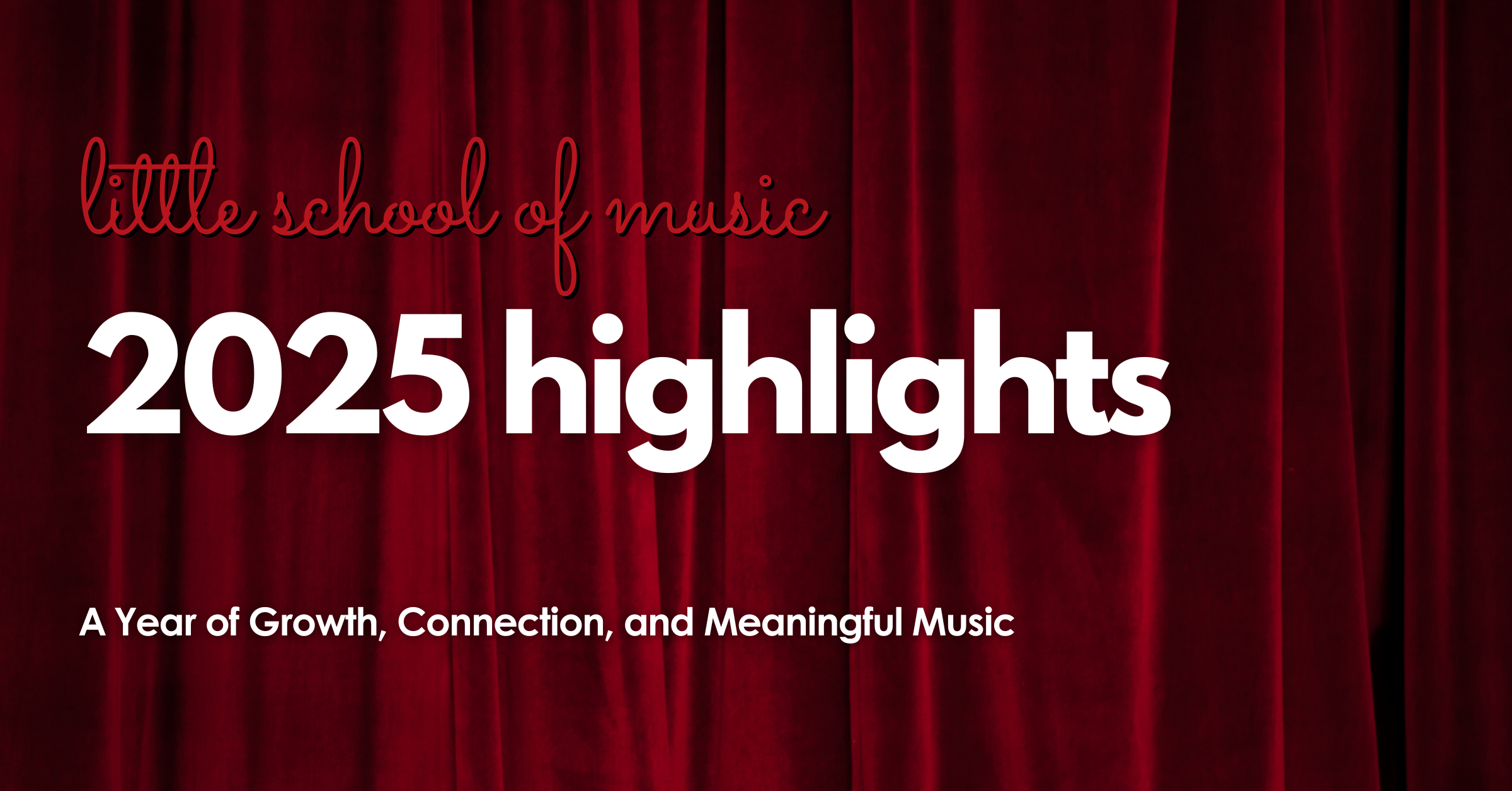You could eat a plain peanut butter sandwich. You could eat a jelly sandwich. But something magical happens when the two distinct flavors combine, they make beautiful music together. The same goes for group learning (such as music classes and performance ensembles), and individual lessons. They complement each other.
Individual Lessons
Individual music lessons help students master their instruments with focused attention from a musical professional. During one-on-one lesson time, students learn the specific techniques and develop skills they need to play successfully. Private Lessons cover correct playing posture and positioning, scales and chords, music theory, and how to produce a sound with good tone quality.
Students can also work on selected repertoire which can help push their individual skill level and understanding of music. They have the freedom to select music they have an interest in learning while also learning music their Instructor selects for pedagogical reasons. Each student has different strengths as well as areas to focus on to further advance and develop well-rounded musicianship. In a private lesson, teachers can pinpoint these areas and give the student the tools they need to improve.
One of the great benefits of individual lessons is that students can learn at their own pace and pursue their own musical interests. They can seek extra help to “woodshed” a difficult riff, or they can ask for in-depth enrichment in areas where they excel. With a teacher by their side, students can set personal goals, focus on their skills, and become more advanced players. As an added benefit, they’ll enjoy the boost of confidence that comes along with their progress.
Group Music Classes
There are many different forms of group music classes from general music to instrument specific classes, to music theory and ear training, and many more. What’s most important is experiencing music together with other people. Talking about it, listening to it, analyzing it, playing it, and sharing it. “Our music” becomes part of who we are and how we define generations.
Hearing how someone else may interpret music can give you a new perspective. (This can be quite enlightening!) Learning from your peers as well as additional music instructors multiplies the information you have at your fingertips and enhances your learning potential. At the same time, you are contributing to the inspiration and curiosity of others too.
Music has the power to bring people from all over the world together from small neighborhoods to big cities. These communities often develop into meaningful friendships.
Ensemble Rehearsals
When students come together in performance ensembles, they contribute to a larger, more in-depth sound than they can achieve on their own. Rehearsal time focuses on combining the individual parts of the music together with the correct rhythm, blend and balance of instruments, articulations, dynamics, and musical expression. These elements can be complicated and very detailed so Directors of music groups have very limited time to teach individual students the specific techniques of playing their instrument.
The benefits of ensembles include musical and social development. Students are introduced to different instruments, sound color combinations, and musical styles as they connect with other young artists. They learn skills needed in higher education and in professional settings such as following a conductor or leader, accompanying and supporting others, and performing in front of an audience. Students develop more refined listening skills, learn to work as a team, and build leadership qualities as they collaborate together.
Let’s not forget the major bonus of being “with the band.” Students who play in ensembles gain an instant peer group and memories that can last a lifetime. Playing with your friends is WAY more fun than playing alone.
A Winning Combination
When you combine individual lessons with participation in group classes and performance ensembles, you get even greater results. Students feel accountable to their peers to improve their individual musical abilities. That means they’re more likely to practice. (Hallelujah!) All the hard work they put into individual lessons, music classes and practice pays off when they come together as an ensemble for productive rehearsals and successful performances. They even increase their self-esteem as they develop into better musicians individually.
Be a Team Player
It’s like a sports team—the better the individual skills of each player, the better the team. And when the team is really good, the players feel compelled to maintain high individual skills so they don’t let their teammates down. It’s a continuous cycle of improvement.
Get Started
Ideally, a student should have some experience playing an instrument before joining an ensemble. An easy way to get started is to join a group class in conjunction with private lessons to pick up the fundamentals more quickly. Students can refine their skills and master their instruments in individual lessons while learning other areas that contribute to well-rounded musicianship in a group class. Once their teacher feels they are ready, they can combine the peanut butter and the jelly by adding ensemble participation to their lessons.
The Little School of Music connects students to group music classes, individual instruction, and performance ensembles that can accelerate their progress as musicians. Contact us to learn more about the awesome benefits of combining individual lessons with group music classes and performance ensembles.


Little School of Music is fully accredited by the Accrediting Commission for Schools, Western Association of Schools and Colleges.




